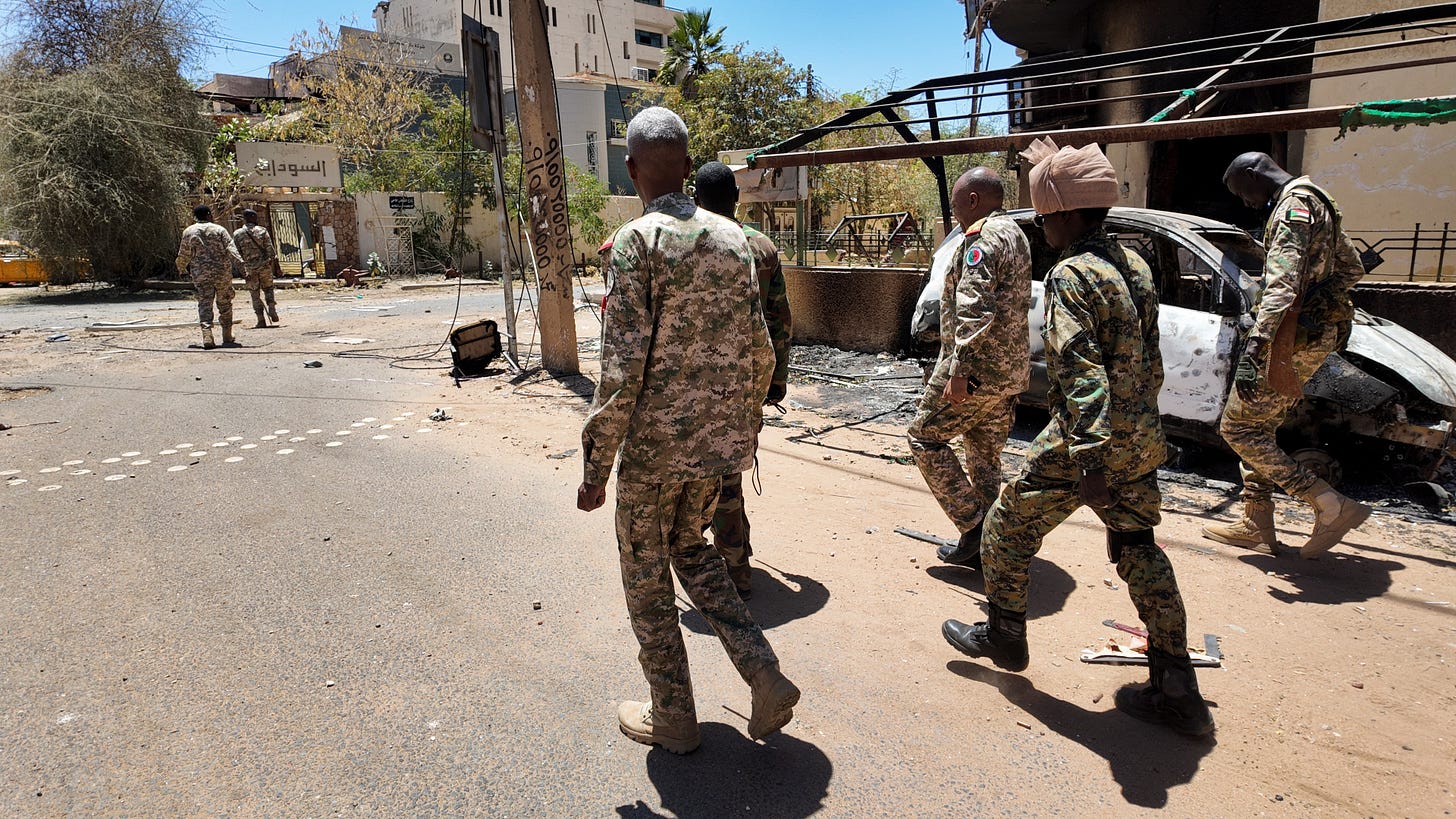Don’t let the Sudan-Libya crisis become another Iraq and Syria
The last thing the world needs is a new Islamic State bordering the Mediterranean and Red Seas.

Last weekend, tensions flared along the Sudan-Libya border following a confrontation between the Sudanese Armed Forces (SAF) and the Subul al-Salam Battalion, a Libyan militia aligned with General Khalifa Haftar.
Today, the SAF announced its withdrawal from the shared border zone, citing "defensive measures" as the reason.
Shortly afterward, the SAF’s rival—the Rapid Support Forces (RSF)—seized control of the area. The SAF has accused Haftar and his allies of supporting the RSF, a claim Haftar denies.
The current clashes between Sudan and Libya eerily mirror the Iraq-Syria spillover crisis of the early 2010s.
While Iraq was still recovering from the 2003 war, neighboring Syria became mired in its own civil conflict. Weak border patrol measures enabled a heavy spillover of the Syrian crisis into Iraq, further weakening Baghdad’s already fragile security framework.
Similarly, while Libya struggles to rebuild after nearly a decade of war, Sudan is plunging deeper into bloodshed. Just a month ago, Libyan authorities closed the border crossing between the two countries following the abduction of three Libyans—an indication of ongoing border insecurity.
Even more concerning is the presence of Salafi-jihadi groups. The 2003 invasion of Iraq turned the country into a magnet for Islamist militants, including al-Qaeda. Meanwhile, Syria’s opposition movement against then-President Bashar al-Assad increasingly took on an Islamist character, with al-Qaeda forming its Syrian affiliate, Jabhat al-Nusra.
This transnational insurgency gave rise to the Islamic State, which seized vast territories in Iraq and quickly capitalized on the chaos in Syria to expand its reach.
The Libyan Civil War similarly attracted a range of jihadi militants. The Islamic State established its Libyan branch, IS-Libya, in 2014. Though now largely diminished, IS-Libya was deadly at its peak, capturing several coastal cities—including Sirte. Other groups, including the Subul al-Salam Battalion, also maintain a Salafi orientation.
The SAF, for its part, retains members of Sudan’s previous Islamist regime and has partnered with the Al-Bara ibn Malik brigade, which previously pledged allegiance to the Islamic State.
While the Islamic State is a shadow of its former self in the Middle East, it—and other jihadi groups—have gained momentum in West Africa, particularly in and around Burkina Faso, Niger, and Mali.
The number of jihadi attacks in these three countries rose by 37% between 2022 and 2024, with over 450 incidents reported annually—many along border regions.
If escalating instability in Sudan and Libya turns both states into a new terror hotspot, militants in West Africa could traverse the Sahel to expand their insurgency across the continent.
Equally troubling is the potential for these jihadists to launch attacks in the Red Sea, mirroring the actions of the Yemeni Houthis since 2023.
In April, reports emerged that the Houthis formed an alliance with Somalia’s al-Shabaab to cooperate in the Red Sea crisis. Despite their ideological differences—the Houthis being a Shiite militia aligned with Iran and al-Shabaab a Sunni al-Qaeda affiliate—this collaboration suggests that jihadist groups are willing to set aside sectarian divides to target Western interests.
Red Sea traffic is already at historic lows—down 60% from typical levels. Further unrest in Sudan and Libya could drive those figures even lower.




